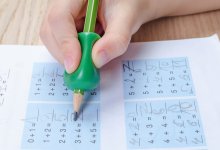Elementary
Helping Elementary Students Develop Conflict Resolution Skills
These tools help kids practice techniques that foster communication, understanding, and social success in the classroom.128Your content has been saved!
Go to My Saved Content.A More Efficient and Productive Way to Conduct Math Assessments
Here’s how to assign graded work that more accurately assesses elementary students’ learning and saves time.Your content has been saved!
Go to My Saved Content.Teaching Young Learners Self-Calming Skills
To help early elementary students manage big emotions, try breathing exercises and sharing how you deal with overpowering feelings.Your content has been saved!
Go to My Saved Content.Exploring Before Explaining Sparks Learning
New elementary science teachers can build student engagement and enhance learning by using the explore-before-explain approach.Your content has been saved!
Go to My Saved Content.The Benefits of Using Choice Boards in Math
How math choice boards can enable new elementary teachers to meet the needs of their individual learners while employing mathematical rigor.Your content has been saved!
Go to My Saved Content.Tips to Help Students With Their Handwriting
These simple tricks to improve motor skills can empower young learners to feel more in control of their handwriting.Your content has been saved!
Go to My Saved Content.A Framework for Building Older Students’ Literacy Skills
Encouraging middle school students to read books of all genres and reading levels can reignite their interest in reading.Your content has been saved!
Go to My Saved Content.Your content has been saved!
Go to My Saved Content.Your content has been saved!
Go to My Saved Content.Your content has been saved!
Go to My Saved Content.Your content has been saved!
Go to My Saved Content.Your content has been saved!
Go to My Saved Content.Your content has been saved!
Go to My Saved Content.Your content has been saved!
Go to My Saved Content.Your content has been saved!
Go to My Saved Content.






